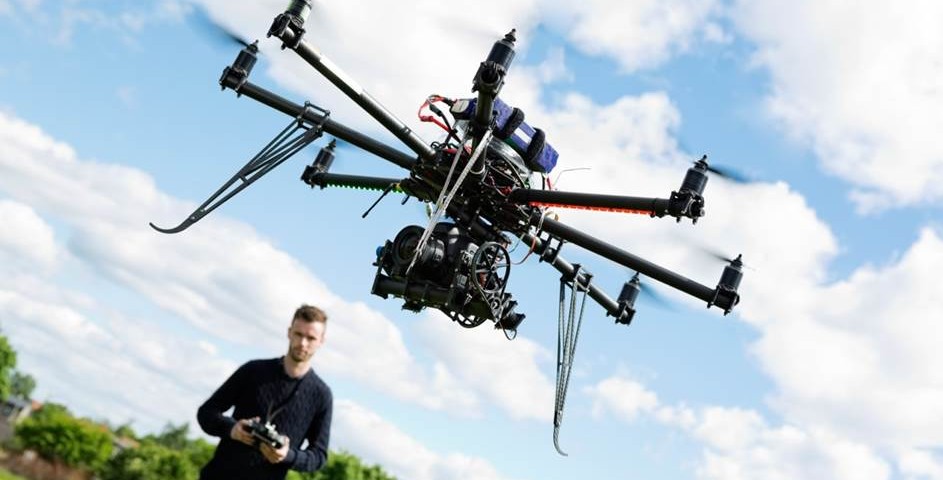Imagining the Future of Training for Unmanned Vehicles
C2 CEO, Dolly Oberoi Talks Technology and Learning on Federal News Radio
January 21, 2014
7 Training Traps that Can Derail Performance
February 25, 2014(Contributed by Bob Tarter)
What do you think of when you hear the word “drone”? Military operations? Amazon’s new package delivery service?
Applications for Unmanned Aerial Vehicles (UAVs)
Those applications are just the tip of the iceberg for the unmanned aviation system (UAS) industry, which will be growing exponentially over the next couple of years. Businesses, law enforcement, and Government agencies are all scrutinizing unmanned vehicle technology, envisioning a wide variety of uses from search and rescue to hurricane warnings to medical equipment delivery. Fast Company includes unmanned vehicles as one of its world-changing ideas for 2014. The technology “is such a game-changer,” says Gene Robinson, president of RP SearchServices, a non-profit that applies drone technology to help law enforcement agencies.
The Training Need
For training companies like C2, this emerging technology represents an exciting new market. Someone is going to have to train people to fly, manage, program, and repair unmanned vehicles. Someone is going to have to explain the new regulations for a new industry. Someone is going to have to educate the public and ensure safety. And before the technology becomes widely used, someone is going to have to help the engineers think through its human factor aspects. With our background in training for manned vehicles, such as the A-10, B-1, B-52, C-17, and EC-130, C2 has a wealth of expertise to bring to the world of unmanned vehicles.
Right now, the industry is limited to public-use agencies—primarily military and law enforcement. But the Federal Aviation Administration (FAA) is working to have regulations for commercial use ready by 2015. That’s when the training need will be at its peak, as people must learn the new skills, new roles, and new processes for a whole new industry. Research and Markets predicts that the unmanned vehicles market will grow at a Compound Annual Growth Rate (CAGR) of 3.17 percent over the period 2012–2016. The Association of Unmanned Vehicles International (AUVSI) projects the number of jobs related to unmanned aerial vehicles to top 100,000 by 2025.
C2’s Unmanned Aviation Division
To prepare for that future, C2 has established an Unmanned Aviation Division, headed by Dr. Bob Tarter, a retired U.S. Air Force Brigadier General, FAA VP for training and safety, and former Delta Airlines pilot.
Training Questions to Consider
As Bob and his team create the framework for C2’s Unmanned Vehicle training, some of the questions they’re considering include:
- How different is the skillset for an unmanned vehicle operator from that of a manned vehicle operator? What new training models are needed? What basic concepts of aviation must still be taught?
- Will training have to be different for unmanned air, ground, and maritime vehicles? Or are the systems and tasks basically the same?
- How can non-visual operations be simulated?
- How can unmanned vehicle pilots detect and overcome any delays between their actions and the vehicle’s reaction?
- What tools or processes are needed to overcome any perceptual gaps of a pilot who is not in the same environment as the vehicle being operated?
- How will unmanned vehicles avoid hitting other vehicles, people, or structures in the environment?
- What type of security protocols will be in place to ensure that unmanned vehicles are not compromised by another operator?
- How will organizations using unmanned vehicles convince the public that these vehicles are safe and will not intrude on their privacy?
- How will weather affect the use of unmanned vehicles?
- How many unmanned vehicles can one operator manage safely at a time?
- What regulations will unmanned vehicle operators need to follow?
- What kind of emergency training will be needed for unmanned vehicles? How can unmanned vehicle operators recognize a crisis from a distance?
- How much does previous piloting experience transfer to operating an unmanned vehicle?
C2’s Vision
C2’s vision is to implement an adaptive training curriculum that is tailored not only to the vehicle but also to the operator and his/her level of experience. We are investing now to address the unique training challenges of unmanned vehicles, such as:
- Availability of training areas/National Airspace System (NAS) integration
- Frequency spectrum management
- The rapid proliferation of numbers and types of unmanned systems in response to wartime demand
- Differing organizational perspectives on vehicle operator qualifications, sensor operator qualifications, and support personnel requirements across the growing number of systems in all classes of unmanned vehicles
- Lack of operator interoperability and universal design standards for unmanned-systems control stations
Ready for the Future
Today, the thought of thousands of UAVs flying around our airspace making deliveries, finding people, and doing other odd jobs may seem like science fiction. But that reality is here, and C2 is ready to train a workforce that doesn’t exist today—the workforce of the immediate future.










